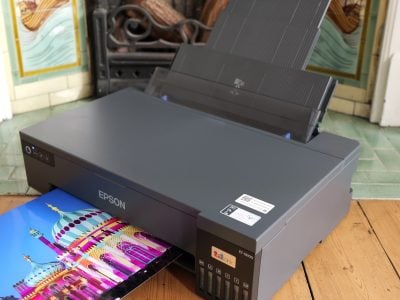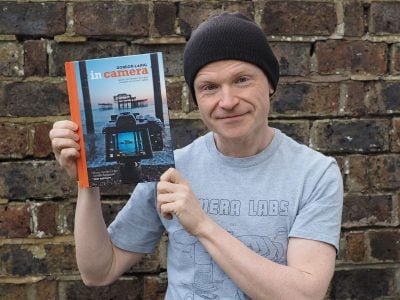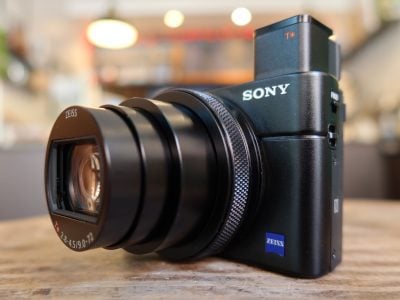Panasonic Lumix S1 II review
-
-
Written by Gordon Laing
Intro
The Panasonic Lumix S1 II is a full-frame camera with a partially stacked sensor, 24 Megapixel photos, 70fps bursts and 6k video. Like other Lumix S bodies, it’ll work with any L-mount lenses, including a wide range from Sigma.
Announced in May 2025 it fulfils Panasonic’s promise at the earlier S1R II launch that more bodies were on the way. Like the original S1 series, there’s now a choice of three S1 II models aimed at different needs and this time all sharing the same body.
Find out everything you need to know about the Lumix S1 II in the video below, or if you prefer to read the written highlights, keep scrolling!
The first model in the updated series was the S1R II with its 45 Megapixel photos and 8k video for those who demand the highest resolution in the current system. Or for roughly the same money, there’s the new S1 II which switches that sensor for a partially stacked one that’s lower resolution but sports faster readout to reduce skewing and support faster frame rates without crops. Sure, not as fast as a fully-stacked sensor, but cheaper and an improvement over non-stacked versions.
It gives you 70fps bursts at the full resolution. You get uncropped oversampled 4k up to 60p, and 4k 120 with a 1.24x crop. It also claims the highest dynamic range in the series to date. These all make it their best photo video hybrid camera in the current lineup.
And there’s also a third model, the S1 II E launched alongside the S1 II, a more affordable option which again shares the same body and feature-set, but this time employing the standard 24 Megapixel sensor of the S5 II and S9 to meet a lower price point.
First things first, the S1 II – and the E version – share exactly the same body as the S1R II, giving them all a step-up in controls and composition over the lower cost S5 series. The grip feels great and there’s plenty of physical control over exposure including separate finger, thumb and rear dials, as well as a joystick, joypad, and a button with a collar dedicated to the AF mode and area.
Physical highlights inherited from the S1R II include a 5.76 million dot OLED viewfinder with vents on each side for the active cooling fans. A monitor that can be flipped out and twisted round, or vertically angled up and down in a single mode.
There’s twin slots, but one is for faster CF Express cards, supporting higher video bit rates for internal ProRes recording even in RAW, or faster flush times, and each port on the side has its own flap.
Both the drive and mode dials are lockable, while the former includes a collar to switch between stills, video and S&Q modes. And there’s also tally lamps on both sides and an extra record button in the front corner.
All represent solid usability upgrades over the more basic S5 bodies, but there’s more inside too. The S1 II and E finally introduce UVC support, allowing them to be used as standard USB webcams, as well as the option to switch from 8-bit JPEG to 10-bit HEIF if preferred. Two long-overdue capabilities I’ve been requesting for a while.
There’s also multiple frame markers, a cropped 2.4:1 movie shape, RAW video over HDMI while recording an optional proxy internally, the chance to backup a card onto an external SSD, wireless timecode over Bluetooth, a new urban sports option under human recognition, the ability to switch the direction of manual focusing rings or assign them with a custom function, and later in the year, the chance to add Arri Log C3 with a paid key costing around $160.
And I’m pleased to report all of these features are also coming to the earlier S1R II with a firmware update, bringing all three models in-line for both external design and internal features.
So the main aspect that separates the three S1 II models is their sensor, so the bulk of this review will be testing that, along with checking out some of those new internal features.
So as mentioned at the start, the S1 II employs a new sensor for Panasonic, described as being partially-stacked and featuring 24 Megapixels. Eagle-eyed camera enthusiasts will guess this is almost certainly the same sensor used in the Nikon Z6 III, although there are differences to note including a less cropped 4k 120 mode on the Lumix.
Either way, a partially-stacked sensor employs circuitry at the top and bottom that increases readout speed without the cost of a fully stacked sensor. Obviously the readout won’t match a fully-stacked sensor, but Panasonic claims the readout is still about 2.5 times faster than the S5 II, or about twice as fast as the S1R II when both are in their standard dynamic range modes. So in theory the S1 II should have reduced skewing for electronic stills or videos, faster electronic bursts, as well as the chance to enjoy higher frame rates for video with less or even no cropping.
Let’s put all of that to the test, starting with the photo quality. Here’s my standard landscape test taken with the new 24-60 f2.8 zoom, and taking a closer look in the middle unsurprisingly shows the same detail as other 24 Megapixel cameras.
But like earlier Lumix cameras, the S1 II also sports a composite High Resolution pixel-shifting mode that captures a sequence of images and combines them to reduce colour artefacts and boost detail, at least under the right conditions.
So let’s keep the original 24 Megapixel file on the left and compare it to the first of the two high resolution modes on the right, which generates a 48 Megapixel image in-camera in just a few seconds. The high res file can also be in RAW, JPEG or both.
You can immediately see a boost in fine detail, albeit also some blurring or ghostly artefacts where any portion has movement, in this case the flag, the people and the birds.
And next here’s the 96 Megapixel high res mode, again showing a further boost in fine detail and overall crispness, albeit again with the motion artefacts. Panasonic does offer a motion compensation mode, but this typically seeks out sections that moved and replaces them with a single frame. It solves the ghostly issue, but with varying resolution in those areas.
So as always it’s best to reserve pixel shifting modes for entirely static subjects, like product photography or archive, and the S1 II can certainly capture fine details with the ease of in-camera processing.
Let’s now see how the video modes compare for resolution, starting in 1080 at 25p, where the view is uncropped horizontally. Next for 1080 at 50p where the view remains uncropped and the quality looks the same.
Next for 1080 at 100p where again the view is uncropped, and you’re still getting sound. And finally in 1080 at 200p, again uncropped with the same quality and with sound. It’s nice to see no compromise at 200p as many cameras take a hit on quality at this point.
Let’s return to the 1080 at 25p clip before switching to 4k at 25p where you’ll see a boost in detail. The view remains uncropped as you’d hope. And now for 4k at 50p which remains uncropped, and shares the same detail as at 25p. I believe both are oversampled, so it’s nice to have great quality uncropped 4k up to 60p.
At 4k 100 and 120p though, the view becomes cropped by 1.24x. It looks noticeably tighter than before, albeit nowhere near as bad as a 1.5x APSC crop, and the quality is at least also looking similar to the lower frame rate versions.
Now back to 4k at 25p for the uncropped view, before switching to the new 2.4:1 mode which simply crops the top and bottom to deliver a more cinematic shape used by many big budget productions.
Before you dismiss this as a novelty though, it does have some benefits over just filming in standard 4k and cropping it vertically. First, the readout is faster, potentially reducing rolling shutter and we’ll look at that in a moment. Secondly since there’s less data to process, it’ll also support frame rates up to 120p without cropping, unlike standard 4k which as you saw crops by 1.24x at 100 and 120p. It’s also available in an uncropped 6k version up to 60p.
The Lumix S1 II also offers a 6k Open Gate mode up to 30p which records the full sensor area in the native 3:2 shape. This not only records more detail than standard 4k, but with greater vertical headroom, allowing reframing or alternative crops from the same clip.
For example here’s another clip I filmed in Open gate, first showing the full 3:2 shaped footage. And now I’ve made two crops from the same clip, on the left a traditional 16:9 wide view, and on the right one in the portrait shape for mobile. Note how the latter exploits the full height of the original clip with more coverage vertically than the 16:9 version on the left.
Open gate is invaluable for anyone making wide and tall versions of their videos, and the S1 II also offers a new slightly reduced resolution option in 5.1k that supports faster frame rates up to 60p.
Comparing them side by side confirms they share the same uncropped coverage in the native 3:2 shape, while taking a closer look reveals only a minor loss of quality on the 5.1k version on the left. Remember this minor reduction allows the faster frame rates up to 60p and is a nice new feature introduced on the S1 II.
While we’re looking at views, I wanted to mention another neat feature on recent Lumix bodies: hybrid zoom. To demonstrate it I have two clips filmed with the new 24-60mm zoom launched alongside the camera. The first shows the standard optical range from 24 to 60mm, so remember how it looks at 60.
Now for the Hybrid Zoom version where the camera seamlessly integrates a mild digital zoom as you turn the actual physical zoom ring. This effectively extends the range depending on your movie quality. In 4k, it allows the lens to start at the same wide-angle, but extends to 93mm, so it genuinely broadens the range versus a simple crop applied throughout. Clever stuff.
Next for a noise test for photos, using a still life scene I shot across the full extended sensitivity range. Taking a closer look at the quality shows very clean images up to 400 ISO with only a fractional sprinkle of noise between 800 and 3200 ISO.
At 6400 ISO onwards, visible noise levels increase while fine detail gradually becomes smeared. There’s a visible drop at 25600 and 51200 ISO, while the top extended sensitivities of 102400 and 204800 ISO are for emergency use only.
Ok now for dynamic range, and since the RAW and HEIF files weren’t supported by Adobe Camera RAW at the time I made this video I’m going to demo what’s possible using Log video.
So I filmed two clips in V-Log and imported them into a High Dynamic Range project in Final Cut. The second clip was using the Extended Dynamic Range option. Since you’re watching this on YouTube in 8-bit, I’ve displayed the Video Scopes so you can see what’s happening with the tonal range.
Rather than simply applying a LUT, I’ve gone straight to the Colour Wheels to adjust the highlights and shadows on the clips. This is normally a challenging scene in bright daylight with the inside of the sculpture lost to shadow and the background often over-saturated with brightness.
But as you can see here I’m able to retrieve all the detail in either the shadow or highlight areas, and with a little tweaking have achieved a good balance of both without looking unnatural. In this particular example, I didn’t notice any particular benefit to the DR Boost mode, but I spoke to some film-makers who’ve experienced a bigger difference in certain scenes. Your mileage will of course vary, but from this example the S1 II had plenty of DR for my needs, and the Dual Gain Output from the sensor is certainly very promising.
Now let’s test the readout speed, first with some photo bursts, starting with the mechanical shutter at its top speed of 10fps. I took these with a 35mm lens and framed the bottle at the same distance as my other recent reviews for comparison, while panning quickly from left to right, and as you’d expect the bottle is upright.
Now for the electronic shutter version, which on the S1 II is shooting at 70fps, almost double that of the S1R II, so you’re going to be seeing much finer increments between frames, but this also gives us more chance to check out the shape of the bottle.
As expected, there’s still a little skewing due to rolling shutter, but it is an improvement over both the S5 II and S1R II which in my tests suffered quite strongly from the effect.
The chance to shoot uncropped 24 Megapixel images at 70fps is very impressive, as is the chance to switch into a pre-burst mode at the same speed. But annoyingly Panasonic still only offers limited options for slower speeds with the electronic shutter. Switching from SH to H dramatically drops the speed from 70 to 10fps, and while you do get to shoot silently, you no longer get the useful pre-burst feature.
So with a buffer of 180 images, whether in JPEG or RAW, the S1 II will burn through that in roughly two and half seconds at 70fps. In my tests after filling the buffer, I found myself waiting between 25 and 38 seconds for it to fully clear depending on the images and card speed; interestingly I didn’t measure much benefit to CF Express over SD either.
And while you can shoot again as the buffer gradually clears, it’ll obviously be for less time than with an empty buffer. Bottom line is I often found myself unable to capture moments during longer action sequences at 70fps as the buffer was already full.
I could extend the buffer by dropping the speed, but right now that means shooting at a fairly modest 10fps and you don’t get a pre-burst option either. The solution is for Panasonic to simply offer some in-between speeds and the chance to use pre-burst on any of them; likewise for the S1R II.
Ok, let’s see if the new sensor has reduced the rolling shutter for video, starting in 1080 at 25p, where it’s looking pretty well-behaved. Likewise for 1080 at 50p. There’s a tad visible, but it’s not bad. Same result for 1080 at 100p, where any skewing is minimal. And finally for my 1080 tests at 200p where again any skewing is kept to the minimum.
So now for 4k at 25p where there’s a very small amount of skewing, but again not bad. I’d say there’s a similar amount in 4k at 50p, but not bad. And now in 4k 100p where you’ll notice the 1.24x crop in this mode. As for rolling shutter, it’s there, but not bad considering the movement.
How about Open Gate 6k, which is reading the entire sensor? At 25p some skewing is visible but again it’s not bad versus non-stacked models. And for completeness, here’s the 5.1k Open Gate Mode at 50p looking roughly similar.
But I’m also interested to see how the new 2.4:1 cinematic shape compares as it’s reading less of the sensor. So let’s have 4k at 25p in the 16:9 shape again as a reminder and now show the 2.4:1 mode also at 25p. I’d say they’re both looking quite similar here, so in this test I’m not personally seeing much benefit in readout speed. I also tested in 50p and the 6k versions and again found the rolling shutter to be similar to the 16:9 versions.
But overall I would say the rolling shutter for both electronic photos and video is visibly reduced compared to previous models in the Lumix S series, making the S1 II the preferred body if you want to minimise this effect.
Just before moving on, I also wanted to mention recording times and overheating. As always, we all get different results under different conditions, so your mileage will vary, but when recording to an SD card with a fully charged battery and the fan set to Auto 2, I managed two hours and 14 minutes of 1080 25p, or one hour and 40 minutes of 4k 50 before the battery ran out. No overheating issues. If you’re using CF Express, be aware they normally run hotter than SD.
Ok now for autofocus, starting with photos, here with the new 24-60 at 60mm f2.8 and with a single AF area. I’m filming the actual camera as recording the HDMI output can slow the focusing process on Lumix cameras, so beware of any demos that do that. Here you can see the focusing is swift and confident with no overshooting.
Let’s now try the same test for video, again at 60mm f2.8, and you can again see the camera confidently pulling focus with no wobbles or overshooting.
And now for a moving target using face and eye detection across the whole frame, and the lens back at 60mm f2.8 to give an idea of how the combination looks for portraits and presentations.
This clip proves the S1 II can easily track a subject at this speed, and as crucially, stay locked-onto me when I pause or stand still, thereby avoiding the wobbles that plagued earlier Lumix cameras prior to them adding phase-detect autofocus.
I’m also pleased to report that more of the video modes appear to support phase detect AF, including 1080 up to 240p and 4k up to 120p, which both shared the same AF speed and confidence as other modes in my tests.
But as video frame rates increase on the S1 II, autofocus options reduce. So 4k 120 loses subject detection, and 1080 240 loses continuous AF altogether.
The S1 II also debuts a new option under human recognition designed to recognise urban sports, like parkour, bmx, skateboarding and breakdancing. These often confuse traditional human recognition systems, as the face and limbs are not in upright poses.
At the press event, Panasonic put on some displays of breakdancing and bmx, and in most cases selecting the urban mode did a better job than standard face or body detection at finding the subject. That said, the biggest issue I found in these scenarios was still the buffer filling too fast at 70fps and taking a while to fully empty.
Moving on, the S1 II inherits the ability to write onto external USB SSDs, allowing you to access large, cheap and fast storage which can easily be connected to a computer afterwards. As before, enabling a USB SSD will disable both card slots, so there’s still no chance of recording to an internal card and external SSD simultaneously.
But in a new feature making its debut here, the S1 II will also allow you to copy data from an internal card onto an SSD for backup. This is done from the playback menu after you’ve connected and enabled the SSD.
You can choose which card slot to copy from and whether to go for specific files or the entire contents, the latter including JPEGs, HEIFs, RAWs, and movie files with the same folder structure. The copy can also be performed in reverse from the SSD to an internal card.
The process was slow in my tests so far using a SanDisk Extreme Portable 2TB drive, especially if there were a lot of photo files. I measured write speeds of about 40MB/s for photos, and 170MB/s for large videos whether copying from SD or CFE. From these results I’d say it’s more for freeing up some space on a full card, rather than performing a full backup on the move.
That said, I think my SSD drive may have been a limiting factor and you may enjoy faster speeds with different drives. Either way, the backup is a bonus on top of the still useful ability to record videos or photos directly onto an external SSD – and that’s something that’s still rare on rivals.
And finally, both in terms of this review and the time I’ve waited for it to happen, the S1 II includes support for UVC and UAC, allowing it to work as a standard USB webcam, without any drivers.
Under the camera’s USB menu you can choose between 720, 1080 and 4k quality for the output, although 4k is only up to 15fps, so I suspect most will go for 1080 which is available up to 60p. You’ll also need a high quality USB cable or you’ll be limited to 720p. I made a few test streams with YouTube Live and managed 1080 quality, although my sound was out of sync when selecting the S1 II as the source of audio.
I think with some tweaking it could be usable, and there is of course still the chance to capture video over HDMI if preferred. All we need now is for them to equip the Lumix S9 as a USB webcam, as surely it’s the most appropriate model in the series for streaming.
Check prices on the Lumix S1 II at B&H, Adorama or WEX UK. Buy used gear from MPB. Sell your used gear to MPB. Alternatively get yourself a copy of my In Camera book, an official Cameralabs T-shirt or mug, or treat me to a coffee! Thanks!
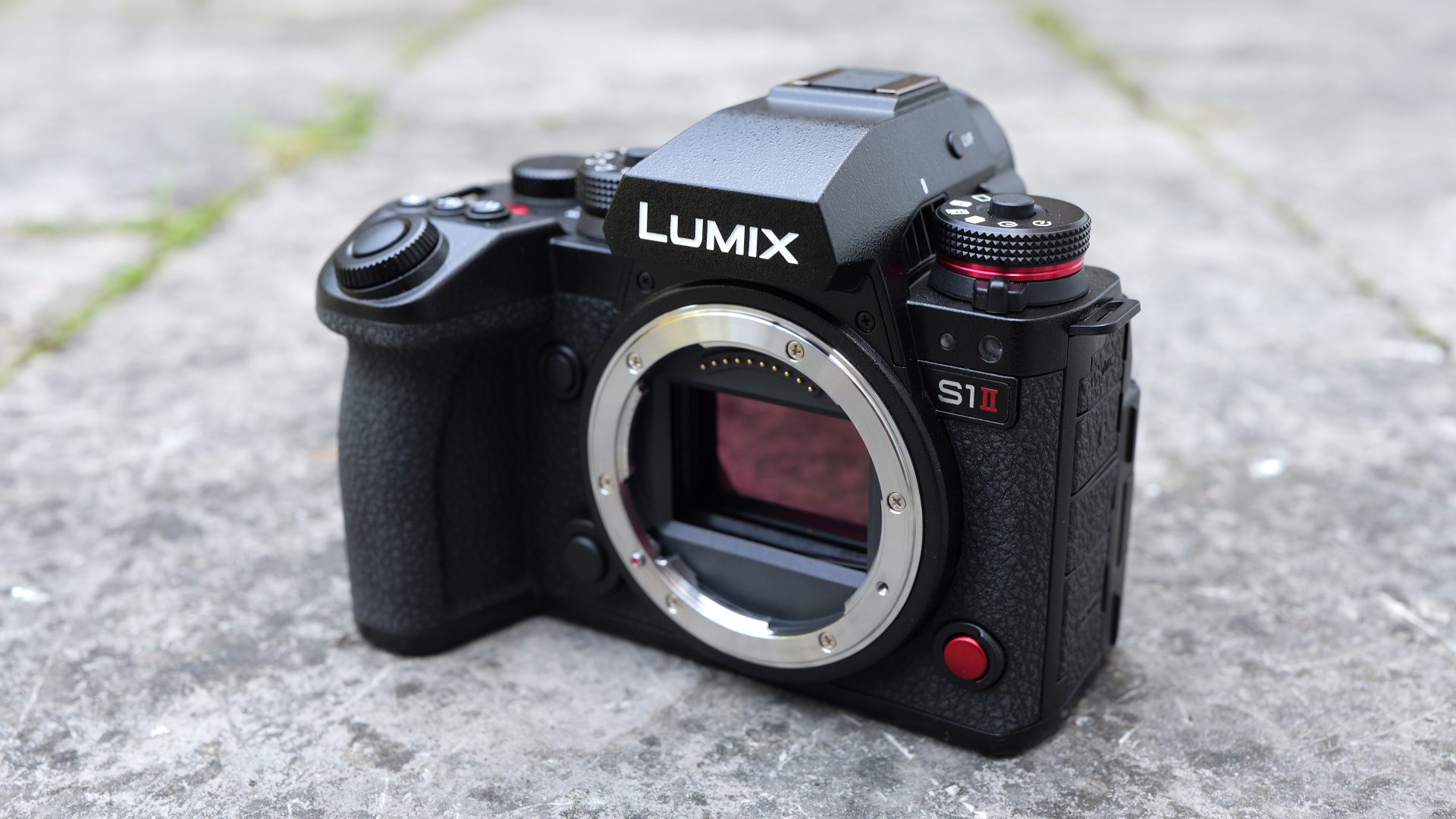
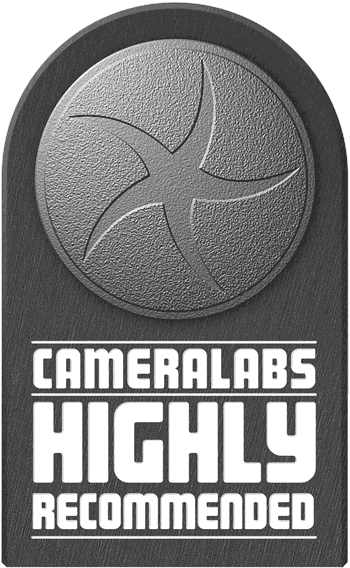 The Lumix S1 II becomes Panasonic’s most capable all-round hybrid camera to date, and my favourite in the series too, packing a faster sensor into their best body with a feature-set that just keeps growing. Photographers get clean 24 Megapixel images and fast 70fps bursts at the full resolution with reduced skewing and steadily improving autofocus. Videographers get uncropped oversampled 4k up to 60p, 4k 120 with a 1.24x crop, and 6k Open Gate, again with less skewing that the unstacked Lumix cameras. Beyond the headline specs, there’s a lot in the S1 II series you won’t find on many rivals, including external SSD recording, cropless stabilization, a wealth of anamorphic features, and built-in fans. The S1R II may take higher resolution photos, but I’d personally trade that for the reduced skewing on the S1 II. Sure the partially stacked sensor on the S1 II may not eliminate rolling shutter artefacts, but it certainly reduces them. My biggest bugbear is the lack of slower electronic bursts with the pre-burst option, as at the top speed it’s too easy to fill the buffer and potentially miss moments; hopefully an easy fix in firmware. New buyers may also be tempted by the Canon R6 II, Nikon Z-6 III or even stretching to a Z-8. But if you’d exploit its extended features or are already invested in L-mount, the S1 II is a very attractive option. Lest we forget, Sigma makes all its new lenses in L-mount, leaving Canon and Nikon owners to look on enviously.
The Lumix S1 II becomes Panasonic’s most capable all-round hybrid camera to date, and my favourite in the series too, packing a faster sensor into their best body with a feature-set that just keeps growing. Photographers get clean 24 Megapixel images and fast 70fps bursts at the full resolution with reduced skewing and steadily improving autofocus. Videographers get uncropped oversampled 4k up to 60p, 4k 120 with a 1.24x crop, and 6k Open Gate, again with less skewing that the unstacked Lumix cameras. Beyond the headline specs, there’s a lot in the S1 II series you won’t find on many rivals, including external SSD recording, cropless stabilization, a wealth of anamorphic features, and built-in fans. The S1R II may take higher resolution photos, but I’d personally trade that for the reduced skewing on the S1 II. Sure the partially stacked sensor on the S1 II may not eliminate rolling shutter artefacts, but it certainly reduces them. My biggest bugbear is the lack of slower electronic bursts with the pre-burst option, as at the top speed it’s too easy to fill the buffer and potentially miss moments; hopefully an easy fix in firmware. New buyers may also be tempted by the Canon R6 II, Nikon Z-6 III or even stretching to a Z-8. But if you’d exploit its extended features or are already invested in L-mount, the S1 II is a very attractive option. Lest we forget, Sigma makes all its new lenses in L-mount, leaving Canon and Nikon owners to look on enviously.